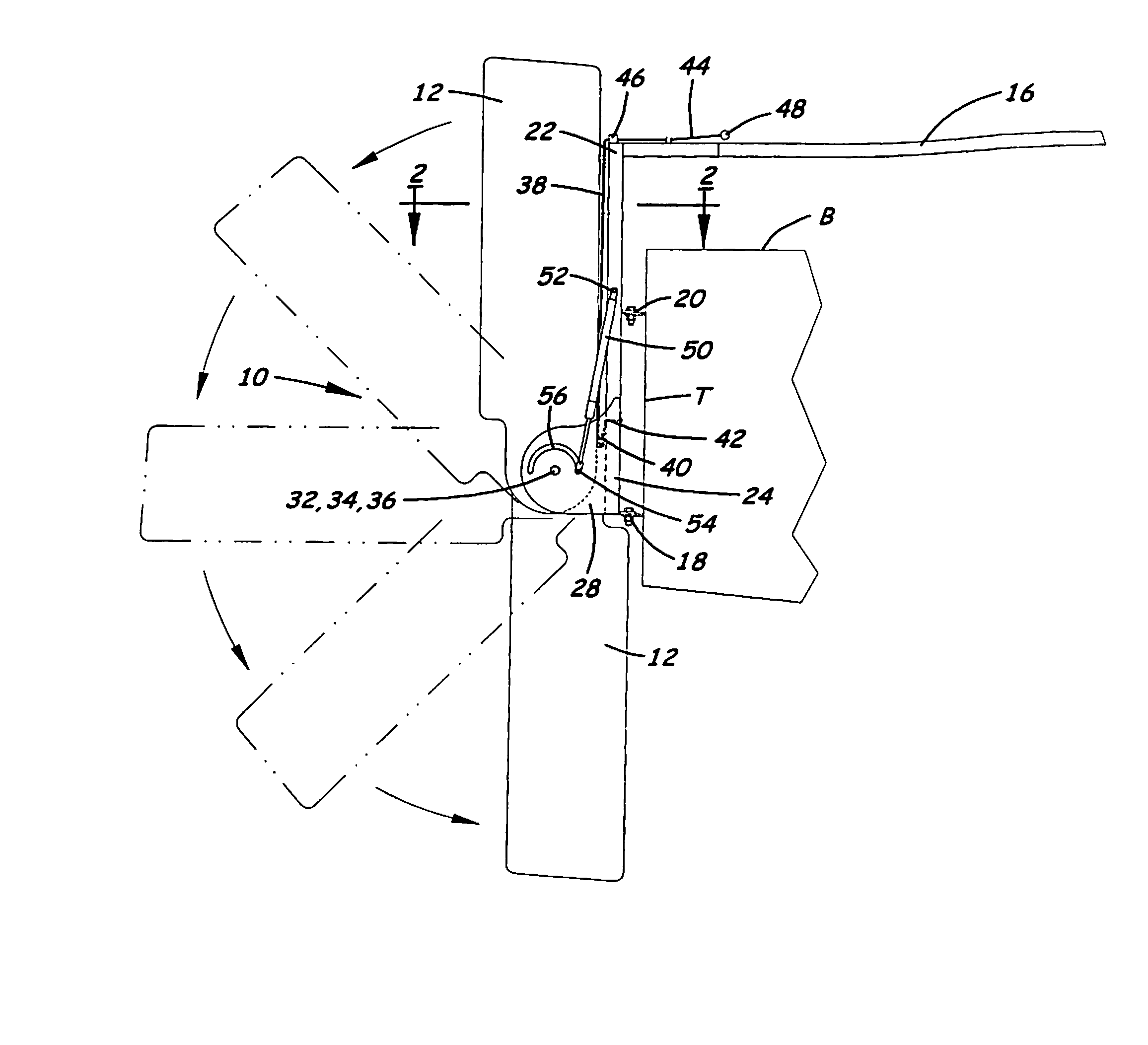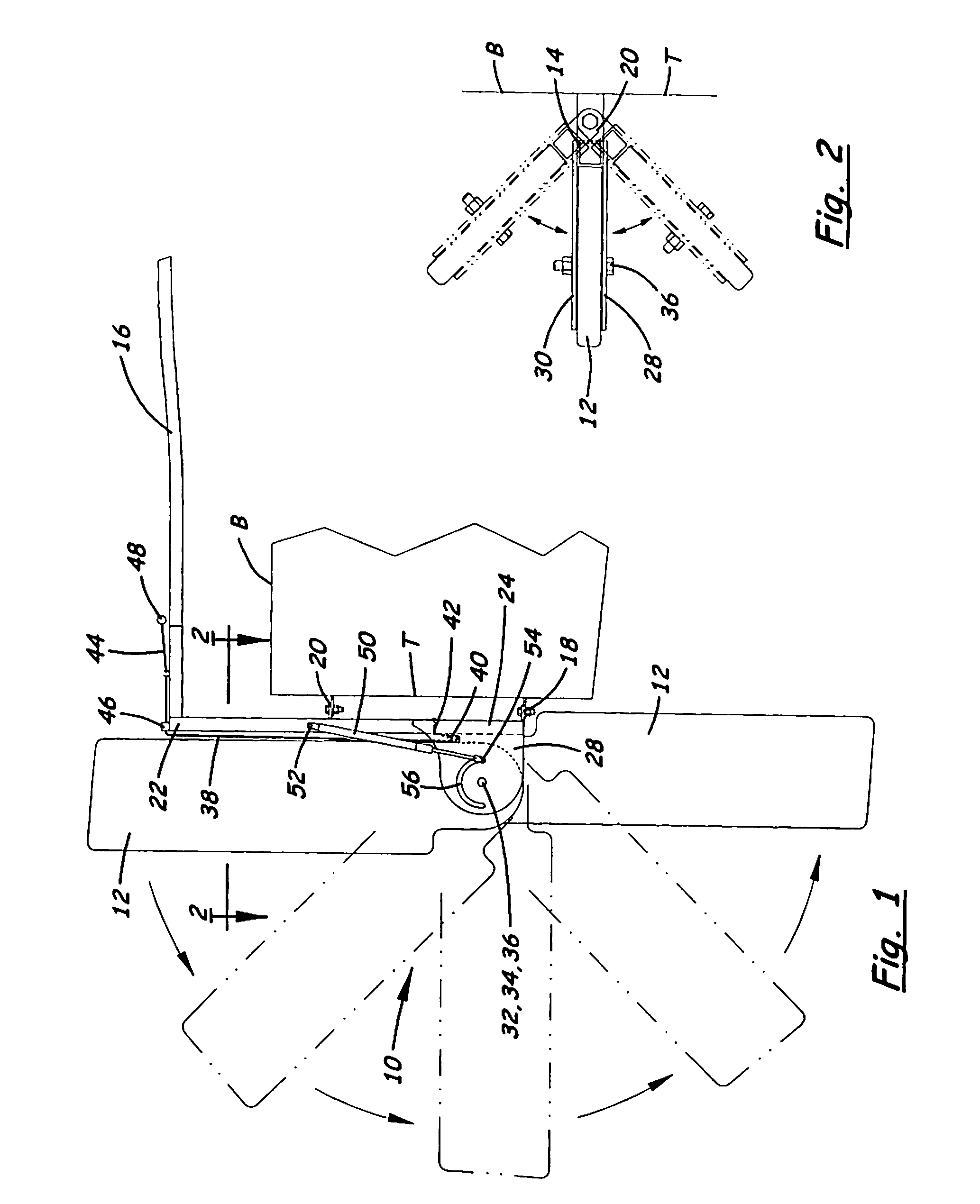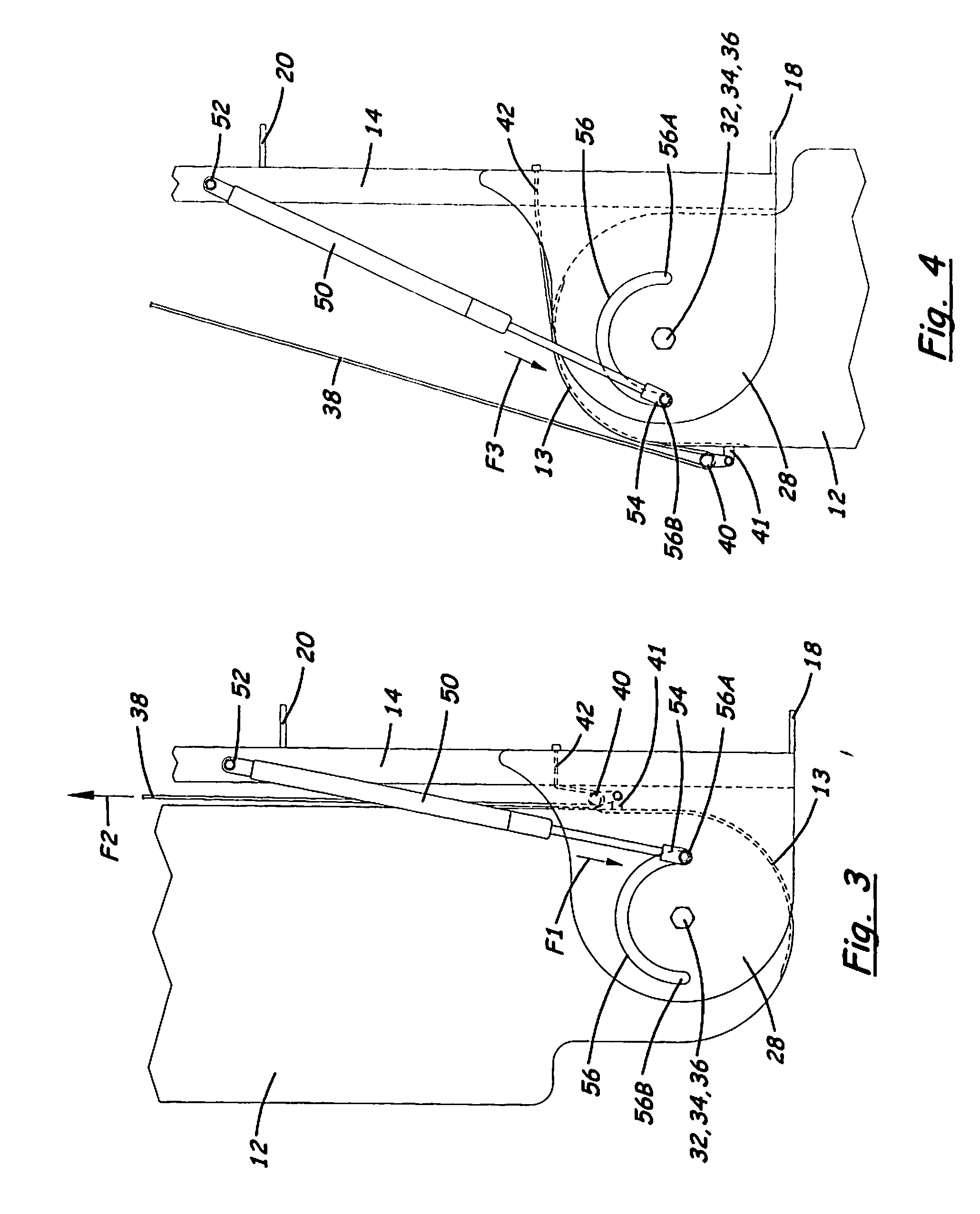Sailboat Rudder
a technology for sailing boats and rudders, which is applied in the field of rudder systems for sailing boats, can solve the problems of affecting the sailing performance of the sailboat, requiring significant strength and attention, and the design of the rudder is problematic, so as to prevent damage to the rudder and facilitate the movement of the rudder
- Summary
- Abstract
- Description
- Claims
- Application Information
AI Technical Summary
Benefits of technology
Problems solved by technology
Method used
Image
Examples
Embodiment Construction
[0020] While the invention is susceptible of various modifications and alternative constructions, certain illustrated embodiments thereof have been shown in the drawings and will be described below in detail. It should be understood, however, that there is no intention to limit the invention to the specific form disclosed, but, on the contrary, the invention is to cover all modifications, alternative constructions, and equivalents falling within the spirit and scope of the invention as defined in the claims.
[0021] Until now, the boat industry has seen a long and unresolved need for a retractable rudder system that allows the operator of a boat to raise and lower a rudder with minimal effort and ease, while also allowing the rudder to have a security mechanism that allows the rudder to yield to underwater obstructions.
[0022] The present invention is a retractable sailboat rudder that is moveable from the up or secured position to the down or employed position or from the down to th...
PUM
 Login to View More
Login to View More Abstract
Description
Claims
Application Information
 Login to View More
Login to View More - R&D
- Intellectual Property
- Life Sciences
- Materials
- Tech Scout
- Unparalleled Data Quality
- Higher Quality Content
- 60% Fewer Hallucinations
Browse by: Latest US Patents, China's latest patents, Technical Efficacy Thesaurus, Application Domain, Technology Topic, Popular Technical Reports.
© 2025 PatSnap. All rights reserved.Legal|Privacy policy|Modern Slavery Act Transparency Statement|Sitemap|About US| Contact US: help@patsnap.com



